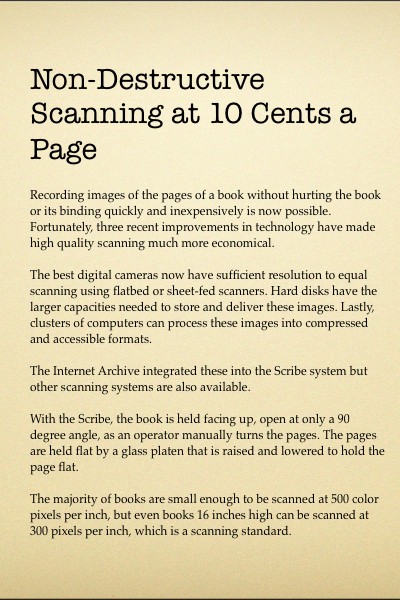 p014 _
-chap- _
toc-1 _
p015w _
toc-2 _
+chap+ _
p016
p014 _
-chap- _
toc-1 _
p015w _
toc-2 _
+chap+ _
p016
Recording images of the pages of a book, without hurting the
book or its binding, quickly and inexpensively is now possible.
Fortunately, three recent improvements in technology have
made high-quality scanning much more economical.
The best digital cameras now have sufficient resolution to equal
scanning using flatbed or sheet-fed scanners. Hard disks have
the larger capacities needed to store and deliver these images.
Lastly, clusters of computers can process these images into
compressed and accessible formats.
The Internet Archive integrated these into the Scribe system,
but other scanning systems are also available.
With the Scribe, the book is held facing up, open at only a
90-degree angle, as an operator manually turns the pages.
The pages are held flat by a glass platen that is raised and
lowered to hold the page flat.
The majority of books are small enough to be scanned at
500 color pixels per inch, but even books 16 inches high can
be scanned at 300 pixels per inch, which is a scanning standard.
[[15]]
p014 _
-chap- _
toc-1 _
p015w _
toc-2 _
+chap+ _
p016